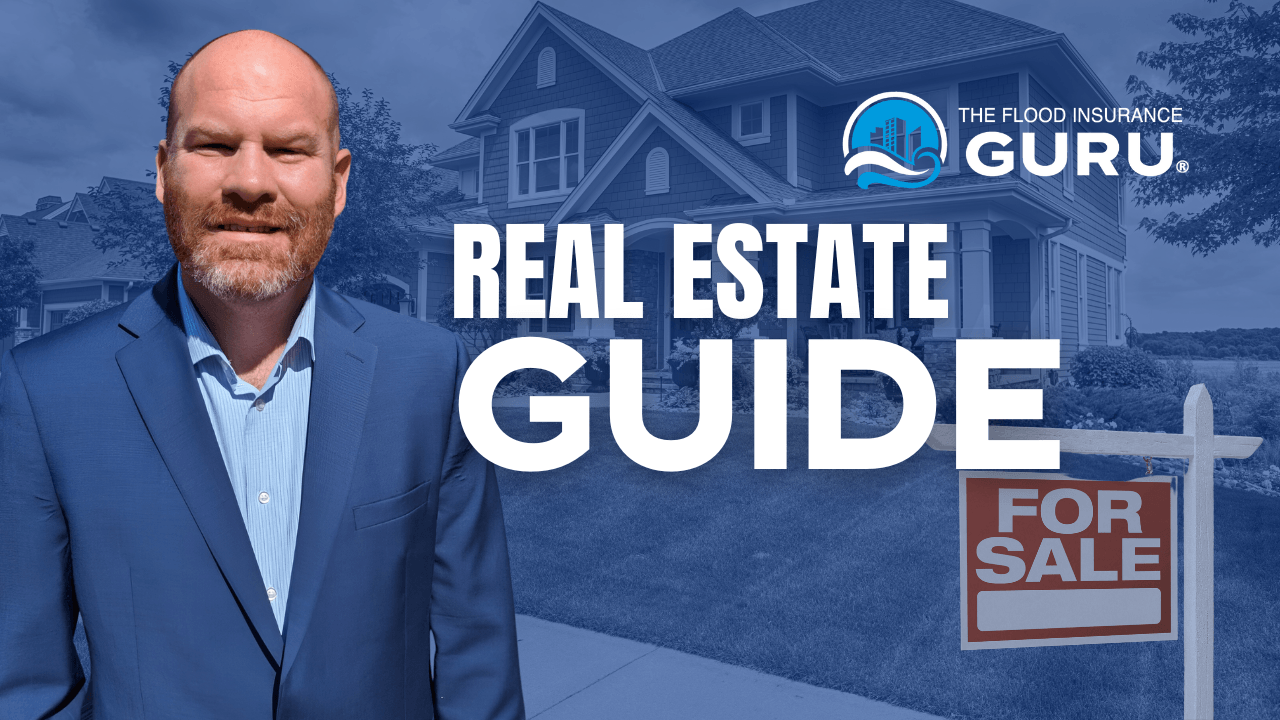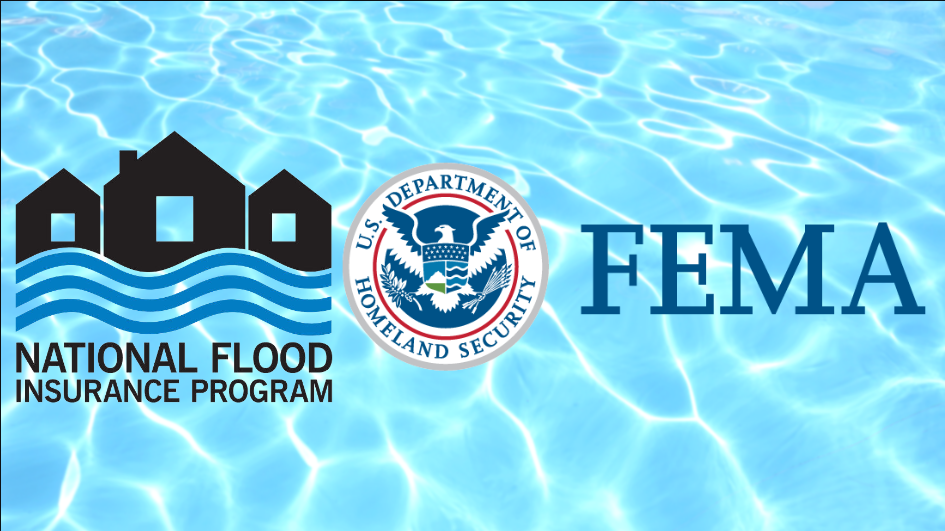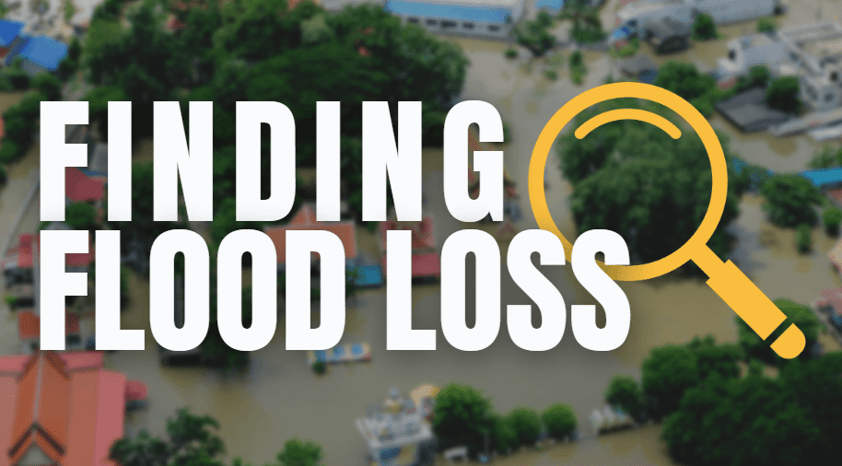Understanding Flood Insurance: Zones, Requirements, & Options
February 14th, 2024
7 min read
By Chris Greene

It's Chris Greene here with The Flood Insurance Guru. We’re back with another blog that we hope will be a valuable resource for real estate agents.
Today we are going to answer those burning flood insurance questions we get from real estate agents every day. Believe me, I wish this guide was around when I bought a home in a flood zone more than 12 years ago. It probably could have saved my real estate agent a big headache and almost a lost deal because of thousands of dollars in flood insurance premiums.
Today we are going to cover the following areas
- Flood zones
- Bank requirements
- Flood Insurance options
- Flood risk score
- Flood loss history
What is Flood Insurance and why does it matter to real estate professionals?
Before we dive into those burning questions you have as a real estate agent, we need to know what flood insurance is and why it may be required.
Flood insurance is a specialized insurance policy designed to protect property owners from damages caused by water infiltration. This is a separate insurance policy because it offers separate coverage for flood-related damages to your home or personal items.
According to FEMA and the National Flood Insurance Program (NFIP), a flood is defined as an event where either two acres or two properties that are typically dry become inundated with water. In order for a flood insurance policy to pay out one of these impacted properties must be your property.
Flooding is very unique because it is the most common natural disaster in the United States and damages are not generally covered by home insurance.
Now that we know what flood insurance is let's look at some of the different flood zones whether you are a real estate agent in the country or on the coast.
Flood Zones
There are many different flood zones in many different areas across the country but we want to keep it simple here. You need the basic information on flood zones so you can get those deals closed.
There are two basic types of flood zones across the country.
Special Flood Hazards Areas (SFHA) or High-Risk Flood Zones
These areas are designated as special flood hazard areas, often identified by flood zones that start with either an A or a V. Referred to as 100-year flood areas, they represent locations with a higher probability of flooding, estimated to have a 1% chance of flooding each year. In other terms, this percentage can mean that your property has at least 26% chance of getting flooded during a 30-year mortgage.
Let's look at coastal flooding areas first. These areas will have a flood zone that generally begins with V also known as velocity zones. These are typically areas that will flood as a result of storm surges. It is important that coastal flooding is not limited to areas like Florida or the Gulf Coast. Some of the biggest threats of coastal flooding occur along the Great Lakes coastlines.
If you happen to be living along the coast, there's one crucial area you need to be aware of. This particular region isn't categorized as a separate flood zone, but rather a protected area known as coastal barrier protected areas, commonly referred to as CBRA areas.
It's important to note that in these areas, federal housing loans are typically not allowed, and the federal government does not provide flood insurance coverage. However, certain private companies do offer flood insurance options for these areas.
Now let's look at those areas known as flood zone A this is going to cover all flood zones beginning with the letter A. In this category, you may see some variation to the letters like Flood Zone AO, Flood Zone AR, and the more common one Flood Zone AE. Like coastal areas, these areas are still going to fall within the 100-year flood area and have that 1% annual chance of flooding.
The video below gives you a guide to flood zone AE or anything that begins with A
Non-Special Flood Hazard Areas or Low-Risk Areas
The other flood zone areas we want to look at are known as Flood Zone X or low-risk areas.
To be honest with you, I really hate how they call it "low risk" because, the reality is, almost 30% of flood insurance claims come out of these areas. What does that mean? It means that despite being categorized as "low risk", being in a Flood Zone X, many of these areas may have a lower risk there is still a risk of flooding.
You can find the flood risk on your property by clicking below.
Bank Requirements
Now that we know what the different flood zones are let's discuss one of the main reasons why you are probably here.
When is flood insurance going to be required?
Simply put, if a property falls within Flood Zone A or V and has a mortgage, flood insurance will be required. In the past, this may have seemed like a complicated equation, but now it is a necessary step for homeowners opting for this type of loan.
The good news is that starting from December 2022, all government loans accept private flood insurance, as long as the community participates in the National Flood Insurance Program (NFIP). Historically, this wasn't the case especially if you're doing an FHA Loan with your home. This change provides homeowners with more options and flexibility when it comes to protecting their properties from potential flood damage.

Now, let's look at the bank requirements for flood insurance. This is one area where we see homeowners get into financial trouble every day.
Banks typically are going to require one of two things either the maximum amount of coverage available through the NFIP or the loan amount whichever one is less. Homeowners tell us every day "I just want to meet the bank's requirements, this property is never going to flood."
But there's an important thing to remember about these requirements! The problem is if you do not cover the property for at least 80% of the replacement cost or the maximum coverage available then the policy may only cover 50% of what it says.
We call this an "Actual Cash Value" policy.
We saw a homeowner after Hurricane Harvey get a $15,000 check for a $150,000 policy. That could put a serious financial burden on someone. Can you imagine paying a mortgage on a property you can no longer live in?
What are the Flood Insurance Options?
In the past, many people believed that there was only one option for flood insurance. However, times have changed just like how flood behavior changes too, and now there are actually two types of flood insurance available.
When I purchased my own home, I had to advocate for private flood insurance with my bank, and it ended up saving me $2500. YES! You read that right!
So, as a real estate agent assisting buyers and sellers, it's crucial to educate them about these two options and the significant differences in coverage. The first option is the National Flood Insurance Program, commonly known as NFIP, which is administered by FEMA. The second option is private flood insurance.
Let's take a closer look at the NFIP program.
National Flood Insurance Program
Under the federal program, there are set coverages available. The good news is you can save your clients time because no matter where you go these rates should be the same as long as coverages are the same. The NFIP offers the following coverages:
Building coverages
Building coverages refer to any structures that are physically attached to the property, such as refrigerators and dishwashers, excluding those located in basements. The maximum coverage offered for these structures is up to $250,000 for residential policies and properties.
Contents coverages
This will cover your personal belongings such as clothing, jewelry, and furniture. It's important to keep in mind that freezers and refrigerators in a basement would be included in the contents coverage.
The NFIP offers content coverage up to $100,000, but please note that these items are covered based on their actual cash value and not their replacement cost.

While all policies should be the same through the federal program. It could be that a property already has one of these policies in place with a rate that may no longer be available. The good news is your client can advantage of this rate through a process called a policy assumption.
This simply transfers a policy from one person to another. There can be some great advantages here. I know because I did this when I sold my property in a flood zone. It sure was easier selling that property with a $300 policy instead of a $3000 policy.
Private Flood Insurance
In contrast to the federal flood program, private flood insurance doesn't adhere to a standardized set of coverages. Various companies offer different building coverages, with some providing up to $5 million. Additionally, rates for private flood insurance can vary from one company to another.
That's why it's crucial for potential homeowners to get at least three different quotes for private flood insurance.
If a buyer decides to purchase a private flood insurance policy, it's important to ensure that the policy includes a private flood insurance clause, which guarantees that the policy meets certain requirements similar to the federal program.

While some private companies offer policy assumptions like the federal program does it usually does not have as many pricing advantages. However, in many situations, we see where private flood insurance can be up to 40% less. Just a few weeks ago we saw where a first-time home buyer saved $1500 on closing costs by moving to a private policy just a few days before closing.
Private insurance companies also provide a valuable benefit known as temporary housing assistance. This coverage is designed to assist individuals whose homes have been affected by flooding and are undergoing repairs. It helps cover the costs of finding alternative accommodations while their homes are being restored.
Flood Risk Score
You may have seen companies like Risk Factor or even realtor.com talking about the overall risk of a property.
This is typically the risk of the property flooding throughout a 30-year mortgage. Even though a bank may not be requiring flood insurance a property may have a high risk score. This can help buyers understand what flood insurance rates will look like and what could happen to them in the future. You can get the flood risk score by clicking below.
The flood risk score takes various factors into account, including the frequency of floods, the type of flooding, and the proximity to water. This information plays a crucial role in determining flood insurance rates and is used by both the NFIP and private insurance companies. It is important to understand that the flood risk score has a greater impact on flood insurance rates than flood zones.
In fact, flood zones are no longer used to determine rates in the national flood insurance program and are only considered by private insurers in about 20% of cases.
Flood Loss History
Finding out if a property has experienced flooding can be a common concern. Many people ask us this question daily. One method you could try is using a home inspection, just like I did, to detect signs of water intrusion.
However, unlike claims for home insurance, flood insurance claims are not as readily accessible. Unfortunately, there is no comprehensive database available on the private side. Furthermore, with the federal flood program, only the current homeowner can obtain a copy of the flood insurance claim history.

We have talked about a lot of different things in this guide for real estate agents so let's do a quick refresher.
Know the flood zones, flood insurance options, flood risk score, and bank requirements. Knowing these things will help you guide your clients through this process.
We can also guide them through this process like we have thousands of people in the last decade. If you are ready to start the flood insurance quote process just click below.
Topics:



